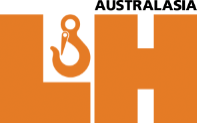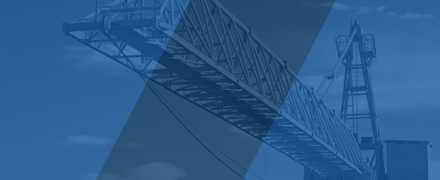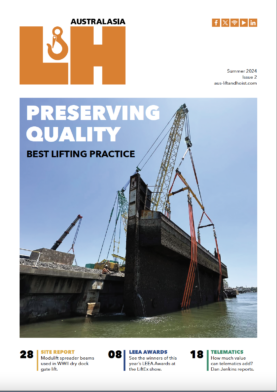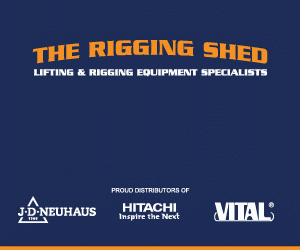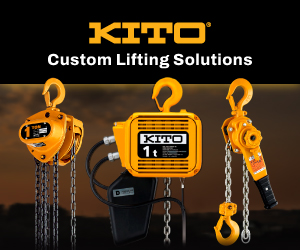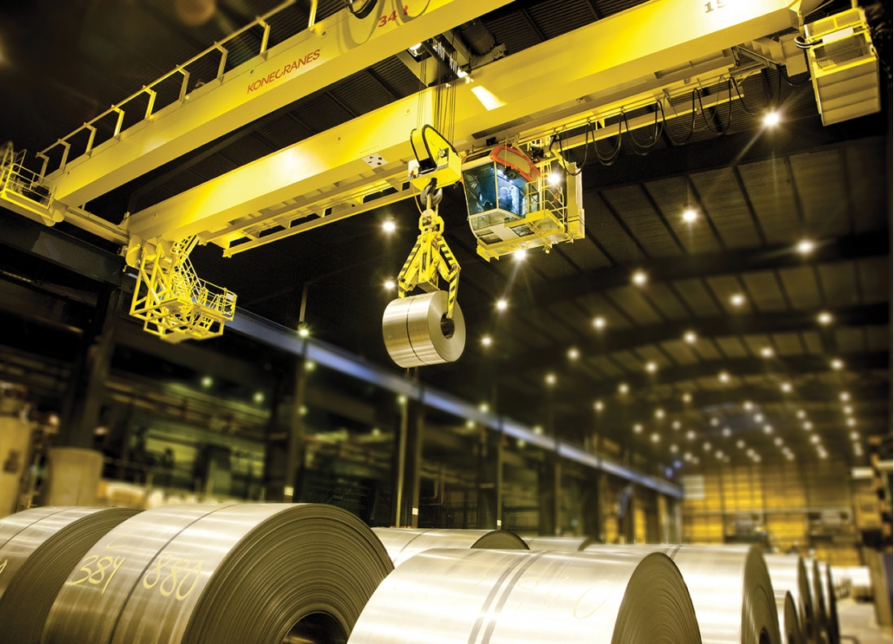)
Older cranes deliver new gains
Nearly all industries depend on electric overhead travelling cranes (EOTs) for their heavyweight maintenance, manufacturing and process needs. The fleets of these essential workhorses of industry have experienced exponential growth over the last 20 years, with rapid economic growth until the Covid pandemic mothballed some sectors of industry and cut production in others.
Now this growth is posed to resume, as Asia-Pacific nations focus on renewed export drives and extensive infrastructure and industry projects to stimulate growth domestically.
“We are already seeing activity growth in a number of countries. Sectors such as construction, public and private infrastructure, logistics, manufacturing, metals, automotive, steel, mining and energy, waste-to-energy and utilities projects are among major sectors earmarked for expansion – in areas extending from China and India, down through SE Asia-Pacific to Australasia,” says global crane manufacturing and service leader Konecranes.
With this resurgence in demand for EOT cranes, will come a renewed focus on achieving the highest standards of reliability, cost-efficiency and safety – a process driven by, not only technology innovations in new cranes, but also by modernizations among the existing fleets of EOT cranes as the region has experienced the largest and longest economic expansion in its collective history.
Mark Beckwith, operations manager of Konecranes and Demag Pty Ltd (a member of the Konecranes Group) says, “As thousands of new cranes have entered service over the past 20 years, the countries of the region have built up a massive and maturing pool of existing cranes. Many of these have been under-utilized in recent times but are substantially sound and can achieve strong cost-efficiency, lifespan and safety gains by being modernized rather than replaced.
“Some older cranes just won’t be able to compete with the efficiency of new crane technologies, but, for others, overhead crane modernization can present a cost-saving alternative to buying new equipment. This will assist a wider range of business to benefit from the more efficient, updated technology that is available in brand-new cranes tailored to particular industries,” he says
Crane modernization raises operational productivity and profitability, as operators of upgraded equipment see a decrease in maintenance costs and control capital expenditures in highly competitive industries. “If you haven’t looked into crane modernization, you’ll likely be surprised by the range of safety and productivity enhancements possible through updating older cranes,” says Beckwith.
As well as being a leading global supplier of new cranes and advanced crane technologies, Konecranes is one of the world’s largest crane service organizations, with more than 600,000 assets of all major brands under service contract worldwide. This experience offers a combination of insights into the needs and economic lifespans of different cranes of all brands, the different needs in different industries, and how to achieve the best safety, reliability and cost-efficiency outcomes for the optimum investment.
Modernization substantially reduces the weight of older cranes, as new motors, trolleys, hoists and other components are significantly lighter than original equipment. Reduction of dead weight like this can often increase the capacity of an overhead crane – an important consideration, as the load demands on equipment have likely increased over the years. The objectives of any crane modernization should be more efficient operation and improved productivity, both of which lead to increased profitability.
Enhanced safety also is a key consideration. Sway control technology, one of the more popular safety upgrades in crane modernization projects, prevents loads from swinging, while enabling operators to move loads faster and position them more accurately.
A variety of automated features can be added in crane modernization projects. For instance, cranes in busy, congested facilities can be automated to run on selected safe travel paths. And automated zone control allows a crane to be programmed to operate only in certain areas, to protect personnel and property.
Another high-tech upgrade is distance-detection control, which senses proximity of other cranes on a runway to prevent collisions. Updated cabs also enhance safety and productivity. They provide operators a better view of their surroundings and feature ergonomically designed seats with built-in controls. These features promote operator comfort, reducing back and neck strain, and making the crane easier and less tiring to operate.
Konecranes crane modernization services encompass a progressive range of cost-efficient modernizations extending up to TruConnect Remote Monitoring — one of the biggest advances in crane safety and cost-efficient management over the past decade.
TruConnect Remote Monitoring can be added to Konecranes equipment as well as cranes made by other manufacturers.
TruConnect Remote Monitoring collects condition, usage and operating data from control systems and sensors on an asset and provides alerts of certain anomalies. Remote Monitoring data is used in maintenance planning and in predicting possible component or equipment failure.
“Crane modernization offers more possibilities than you might imagine for updating old equipment to new standards of productivity and safety,” says Beckwith. Key considerations include:
- Prolonging the economic service life of the crane
- Establishing when critical components are reaching the end of their economic service life and/or design life
- Increasing production demands
- Changing application needs
- Changing statutory requirements
- Rising costs and time spent maintaining your aged crane are rising, with increased downtime in essential processes
- And when a company is considering replacing a crane
Companies considering whether a modernization is a valid option can use tools such as a Konecranes Crane Reliability Study or a Steel Structure Analysis.
Konecranes Crane Reliability Study (CRS) and Steel Structure Analysis offer deeper insights into the condition, safety and efficiency of lifting equipment, thus delivering valuable information to better predict and control the total cost of ownership.
Crane Reliability Study: An engineering assessment that evaluates the current condition of a crane and provides a theoretical estimate of its remaining design life and recommendations for next steps. The study looks at structures, mechanical components and electrical systems, and highlights possible maintenance and modernization needs.
A CRS provides an exhaustive analysis and comprehensive report for all makes and models of overhead lifting equipment, outlining the condition of the crane and its current operating capacity. In addition, a CRS report contains recommendations for the future actions needed to maximize the use of the equipment, thereby enhancing safety, improving performance and increasing reliability.
Steel Structure Analysis: This service has been designed to calculate the remaining fatigue life in the steel structure of a crane and inspect it for any defects. The analysis provides detailed information of the condition and remaining fatigue life of a crane steel structure and can also help determine if the steel structure is suitable for modernizations.
“Sometimes the best option may be a new crane. But the number of existing cranes out there is huge, and many properly maintained cranes can be cost-efficiently modernized,” says Mr Beckwith.
“Modernizing a good existing crane to the best global standards can be a very attractive option where the machinery is assessed as fundamentally sound after thorough compliance, condition and safety audits to help to establish which is the best choice for each operation and industry.”
